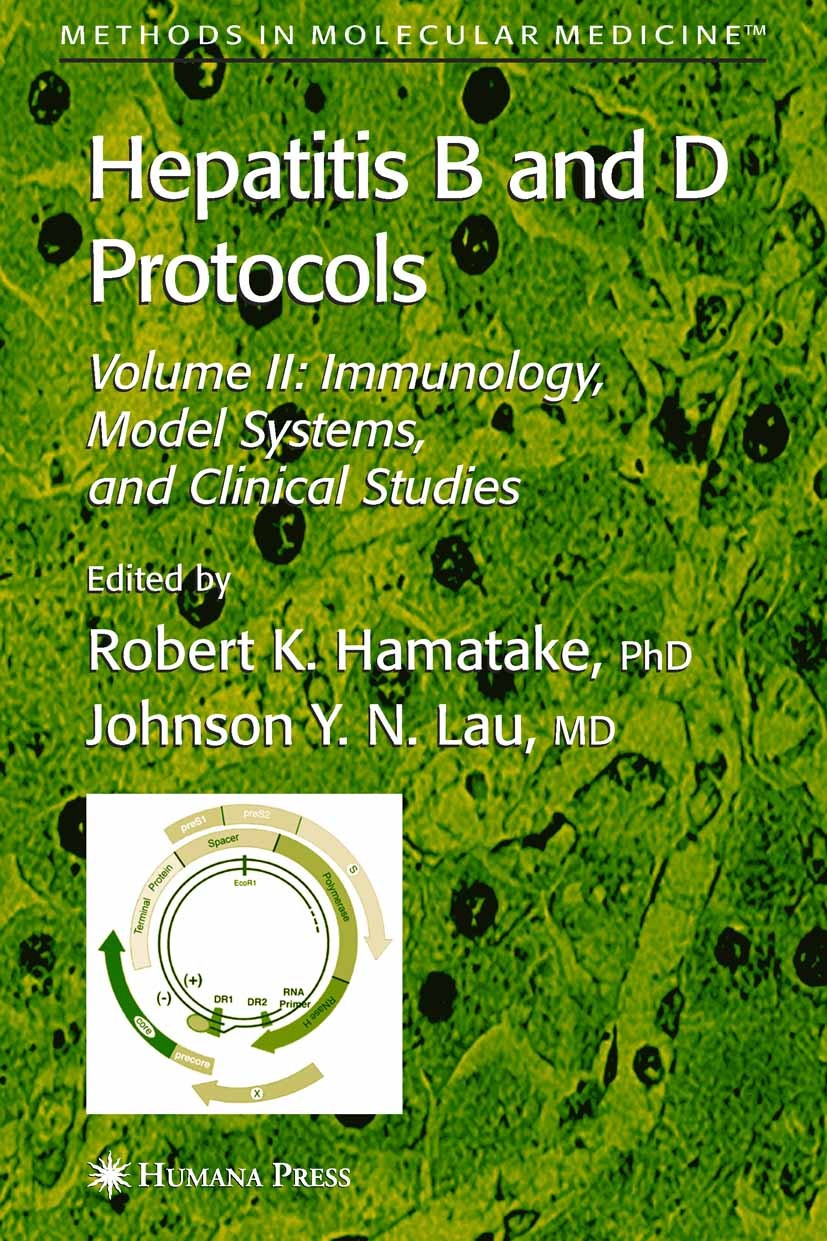| 书目名称 | Hepatitis B and D Protocols | | 副标题 | Volume 2: Immunology | | 编辑 | Robert K. Hamatake,Johnson Y. N. Lau | | 视频video | http://file.papertrans.cn/426/425705/425705.mp4 | | 概述 | Includes supplementary material: | | 丛书名称 | Methods in Molecular Medicine | | 图书封面 |  | | 描述 | Despite the availability of an effective vaccine, there are still 400 million people, worldwide who are chronically infected with hepatitis B virus (HBV). For them, the vaccine, as currently applied, has no value. Given the possible consequences of HBV infection, the number of those chronically infected with HBV presents an enormous public health challenge. For example, the major etiology of hepatocellular carcinoma (HCC) is chronic infection with HBV. Although fifth in cancer incidence, worldwide, HCC/liver cancer is the third leading cause of cancer death. The high mortality as- ciated with HCC arises because the disease is often detected late and is unresponsive to treatment. The number of deaths caused by PHCC is expected to rise over the next 20 years. Those chronically infected with HBV have a life risk of death to HCC of between 10 and 25%. Even the limited efficacy of drugs for the treatment of chronic HBV helps underscore the point that this disease is responsive to therapy. Drugs that target the polymerase (e. g. , hepsera and lamivudine) and interferon alpha represent two distinct strategies and show that both conventional antiviral and immunothe- peutic approaches can b | | 出版日期 | Book 2004 | | 关键词 | infectious diseases | | 版次 | 1 | | doi | https://doi.org/10.1385/1592596703 | | isbn_softcover | 978-1-61737-363-3 | | isbn_ebook | 978-1-59259-670-6Series ISSN 1543-1894 Series E-ISSN 1940-6037 | | issn_series | 1543-1894 | | copyright | Humana Press 2004 |
The information of publication is updating

|
|
 |Archiver|手机版|小黑屋|
派博传思国际
( 京公网安备110108008328)
GMT+8, 2025-11-12 15:53
|Archiver|手机版|小黑屋|
派博传思国际
( 京公网安备110108008328)
GMT+8, 2025-11-12 15:53


